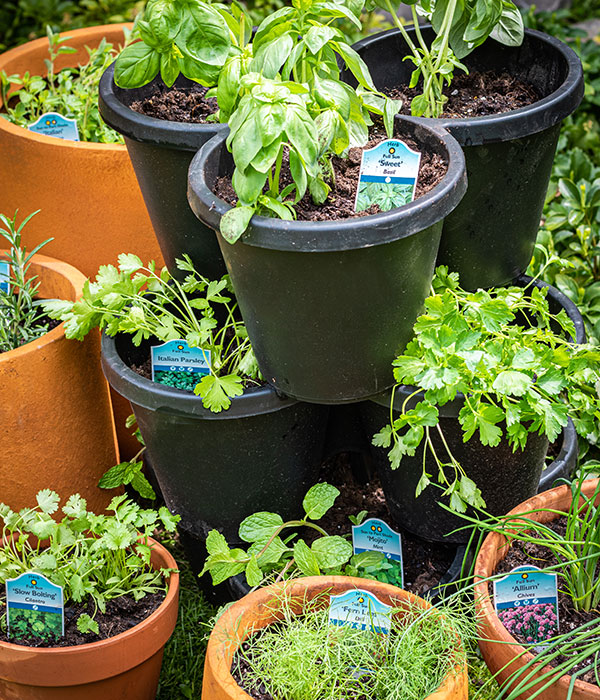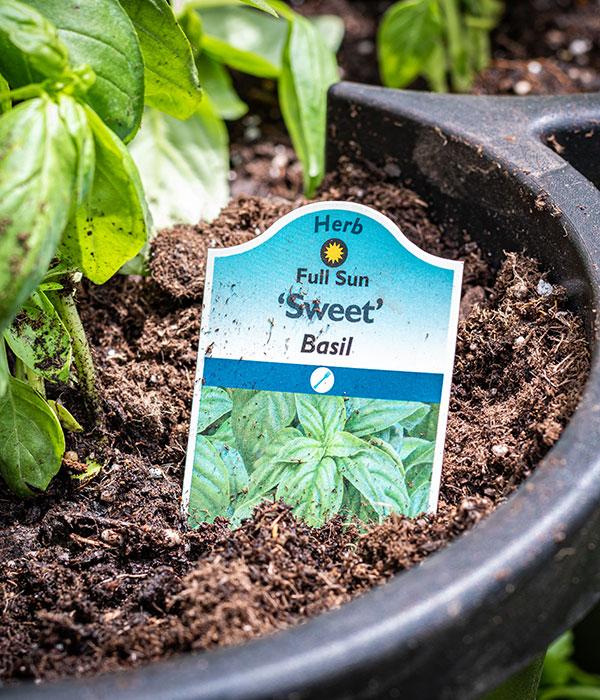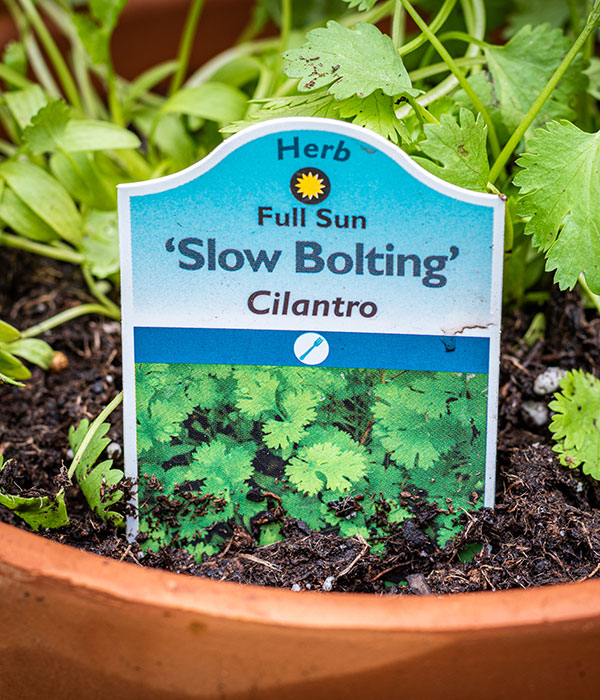How to Make a DIY Stacked Herb Garden
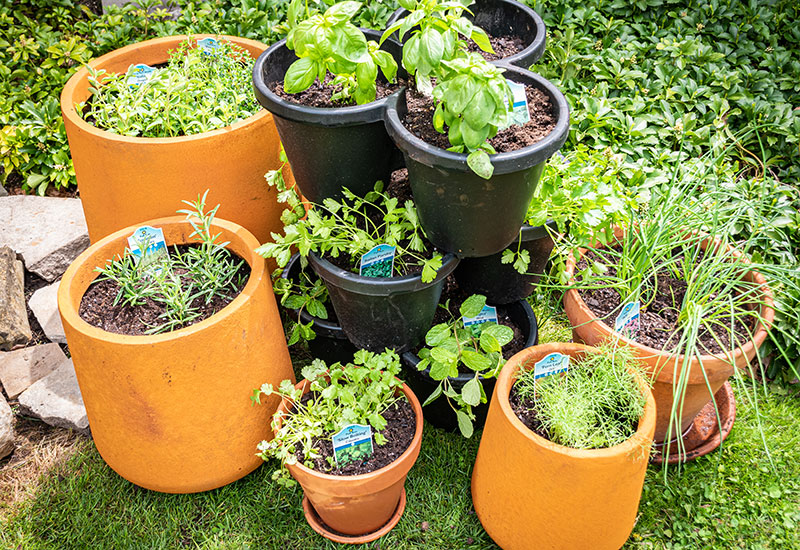
The following post was created in collaboration with Lauren Schulte of @TheBiteSizePantry and Ashley Durand of Plate and Pen.
When it comes to bringing out the flavors in food, fresh herbs are a powerful tool, but maintaining the freshness of herbs over time isn’t always easy.
Of course there are tips and tricks for storing fresh herbs that help with longevity, but for the most vibrant-flavored food, growing them yourself is the way to go!
Thankfully, you don’t have to have a green thumb to grow an herb garden at home. Heinen’s Floral Department does the dirty work by sourcing fresh potted herbs from Millcreek Gardens in Ostrander, Ohio.
Located just outside of Columbus, Millcreek Gardens’ plants are grown by experienced growers who understand all that is needed to produce the highest quality herbaceous perennials, herbs, annuals and shrubs including a strong root system, a custom soil mix with good drainage and water holding capacity and recyclable containers that support the health of the plant while pleasing the eye.
Available in Heinen’s Floral Department each May and guaranteed to bloom and perform, there’s never been a better time to start your own DIY herb garden. Grab a few pots, get outside and use the inspiration below to get gardening!
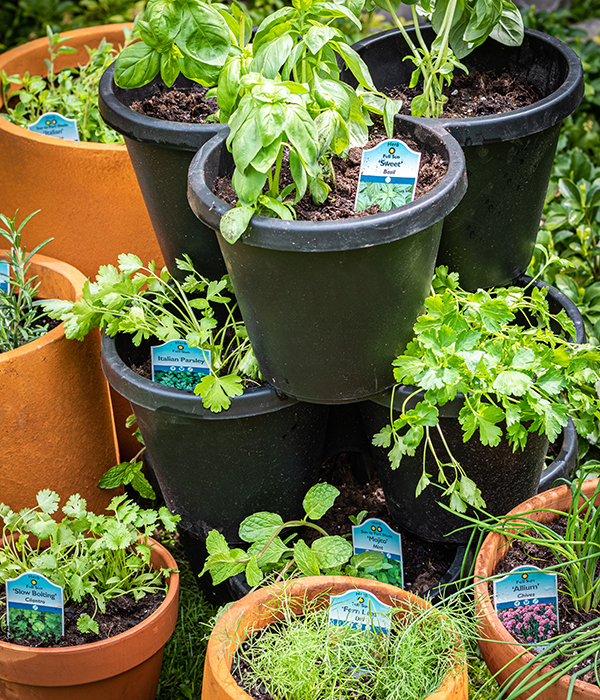
The Benefits of a DIY Herb Garden
Building a DIY herb garden may require a little elbow grease in the beginning, but the benefits are worth it!
- It reduces waste by allowing you to grow what you need instead of over buying at the grocery store and hoping you use it all before it goes bad.
- It allows you to get creative in the kitchen! There’s a fresh herb to compliment every flavor profile. Imagine all of the delicious dishes you could create with one quick visit to your herb garden instead of multiple trips to the grocery store.
- It gets you outside! We spend so much time cooped up inside because of Midwest weather or work. The responsibility of an herb garden will force you to step into the sunshine for at least a few minutes each day.
Step 1: Select a Location and Herbs
A stacked herb garden is perfect for a small patio/ deck or an apartment balcony. Just make sure that the location you choose gets a little morning shade and plenty of afternoon sun and, if there is no rain in the forecast, water them every other day.
When selecting herbs to include in your garden, think about the varieties you reach for most often in your everyday life. I cook all the time and love experimenting with flavors, so this particular herb garden features a large assortment of herbs, but your herb garden can easily be scaled down to include 3-4 varieties. The specific herbs in this garden include:
- Italian Oregano
- French Thyme
- Sweet Basil
- Slow Bolting Cilantro
- Fern Leaf Dill
- Italian Parsley
- Common Rosemary
Step 2: Choose the Perfect Soil and Pots
To build an herb garden at home, you’ll need proper pots, potting soil and plant food. I recommend clay planters, a couple large bags of soil and a cup or two of plant food. I use a local organic plant food mixture, but any brand will do just fine.
When selecting the pots, get creative and play around with sizing. The size of the pots you choose will depend upon how many herbs you plan to plant and the size of the space where the garden will live.
I built my garden in my backyard where I get total sun, so I used one large stackable set of 9 pots (3 sets of 3) and a variety of large, medium and small glazed clay pots. The biggest pot holds the herbs I use the most: oregano and thyme.
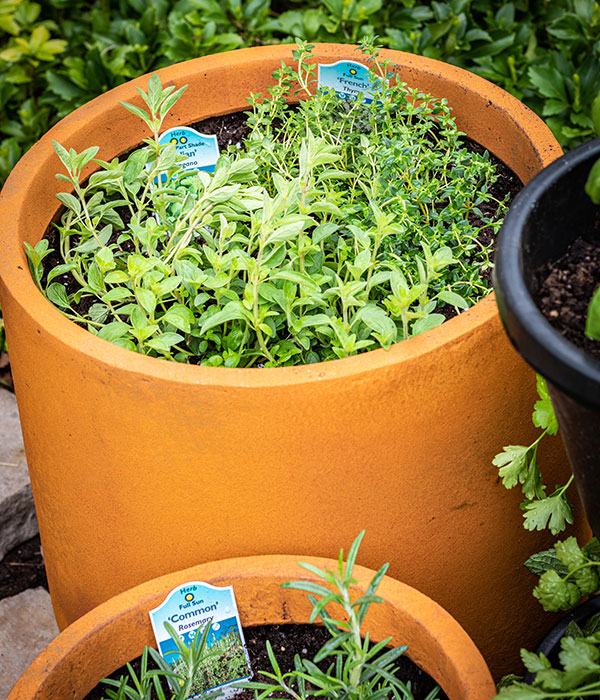
To create the “stacked” herb garden effect, designate an herb or two for each planter. This will give each herb space to grow and and establish roots. When deciding which planter in your garden to plant each herb, take into consideration the size and style of each variety you’re using and feel free to alternate heights, textures and shades of green to increase visual appeal. Just make sure to keep the plant tags near each herb so you never forget what you planted.
Step 3: Assemble the Herb Garden
This is where things get fun! It’s time to place the herbs and watch your garden come to life!
Once you know which herbs go in which planter, fill each planter 3/4 of the way with soil and stack them to your liking.
Once the pots are filled and stacked, dig small holes in the soil for each individual herb and put a couple tablespoons of the plant food in each hole. Adding the plant food before you place the herb into the pot ensures that each herb will receive the nutrients it needs for optimal growth.
